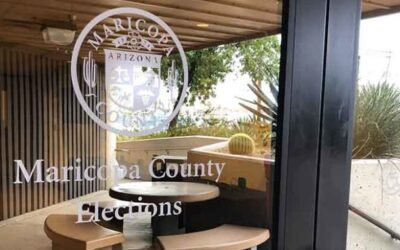By Corinne Murdock |
The Federal Communications Commission (FCC) says that the Affordable Connectivity Program (ACP) will end come April due to a lack of funding, impacting about 552,000 Arizonans who rely on the program for discounted or free internet.
FCC Commissioner Geoffrey Starks offered that data and insight in his appearance with the director of the Treasury Department Capital Projects Fund, Joseph Wender, before the INCOMPAS Policy Summit last week. As of January, ACP has a total of about $2.5 billion left in remaining funds out of $17 billion in total appropriations. INCOMPAS is an internet and competitive networks association advocating for competition policy; member companies include Amazon, Dish, Google, Microsoft, Netflix and Verizon.
“High-speed internet is not a luxury anymore, it’s an absolute necessity,” said Starks. “If ACP ends, [I] predict that the end result will be that many of these households will be unable to stay online, will be unable to stay connected.”
ACP is part of the $14.2 billion from the Infrastructure and Investment Jobs Act (IIJA) modifying and extending the Emergency Broadband Benefit Program, now near exhausted. ACP gave certain low-income households funds to cover their monthly internet bill, as well as a one-time discount on the purchase of a laptop, desktop computer, or tablet. Monthly discounts amounted to $30 for regular Americans, and $75 for Americans living on tribal lands. Discounted electronic purchases amounted up to $100. Most of the participating companies offered internet plans for which ACP covered the total bill.
ACP-eligible families were households with an income at or below 200 percent of the Federal Poverty Guidelines, or participants in welfare programs like SNAP, Medicaid, Housing Choice Voucher Program (Section 8), public housing, SSI, WIC, or Lifeline; participants in the Free and Reduced-Price School Lunch Program or School Breakfast Program; recipients of a Federal Pell Grant; and participants in tribal-specific programs such as Bureau of Indian Affairs General Assistance, Tribal TANF, Affordable Housing Programs for American Indians, Alaska Natives, or Native Hawaiians.
Participating companies in Arizona included Spectrum (Charter Communications Operating), Mediacom, Nexus Telecom, Comcast Xfinity, Metro by T-Mobile, and Cox Communications.
Arizonans have claimed over $313.6 million as of January, according to FCC data. Maricopa County led in claims, using up over $149.7 million in ACP funds for over 266,000 households, followed by Pima County, $52.3 million for 86,200 households; Yuma County, $19.7 million for 31,900 households; Navajo County, $18.8 million for 13,200 households; Apache County, $17.6 million for 11,500 households; Pinal County, $12.7 million for 22,400 households; Mohave County, $7.5 million for 10,100 households; Coconino County, $7.4 million for 6,000 households; Cochise County, $5.8 million for 11,000 households; Yavapai County, $3.8 million for 6,300 households; Santa Cruz County, $2.4 million for 3,800 households; Gila County, $1.4 million for 2,100 households; Graham County, $821,000 for 1,200 households; La Paz County, $510,000 for 800 households; and Greenlee County, $129,000 for 180 households.
The FCC reported that no specific county or household data could be given for $12.6 million funds spanning over 7,400 households.
After ACP provides a partial reimbursement for May, the program will conclude. The FCC reported that over 23 million households were impacted by the ACP wind-down; the agency froze enrollment into the program last month.
Arizonans enrolled with ACP should have received a written notice in January notifying them of ACP’s end. A second notice should be issued by March 19, and a final notice should be issued as part of the last bill or billing cycle including the ACP discount.
An FCC survey of a sample size deemed representative of the entire ACP population reported that over two-thirds of ACP’s 23 million households, about 15.6 million, had inconsistent or zero internet access prior to ACP. 80 percent of those respondents cited affordability as the reason.
The FCC based their analysis on just over 5,300 respondents, or about .02 percent of the total ACP population.
According to the FCC, 50 percent of ACP households were Black or Latino; nearly 50 percent were military households; over 329,000 were tribal households; over 4 million were elderly households; and over 10 million were households with family members over the age of 50.
Corinne Murdock is a reporter for AZ Free News. Follow her latest on Twitter, or email tips to corinne@azfreenews.com.








